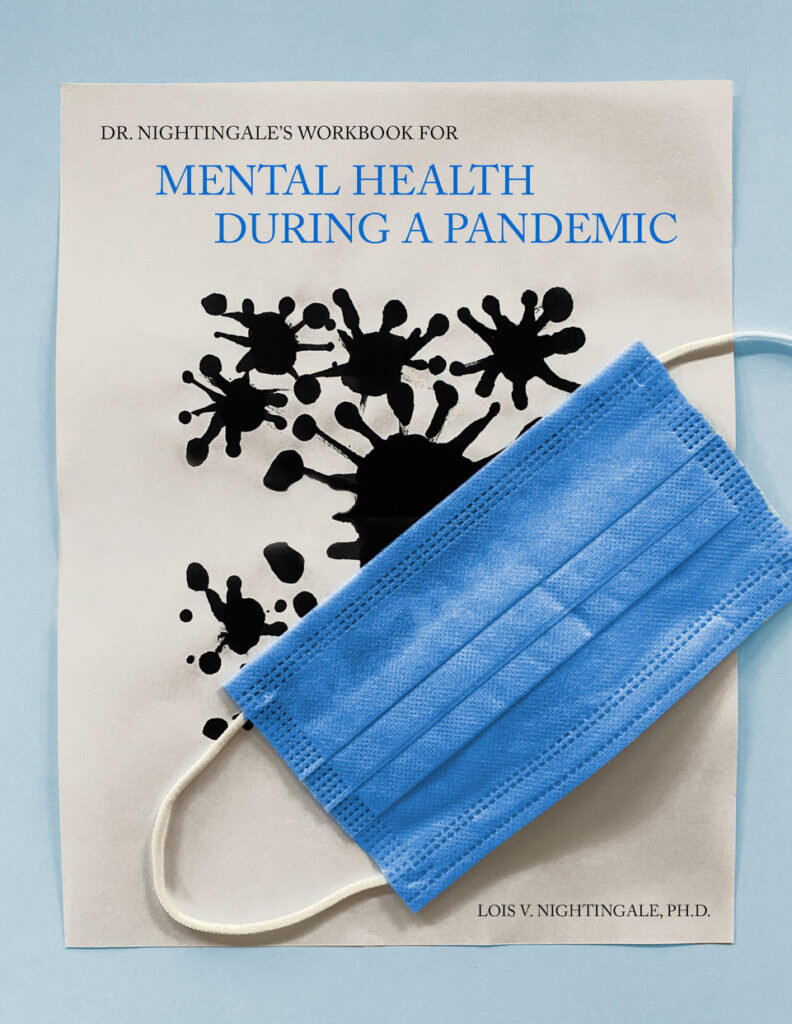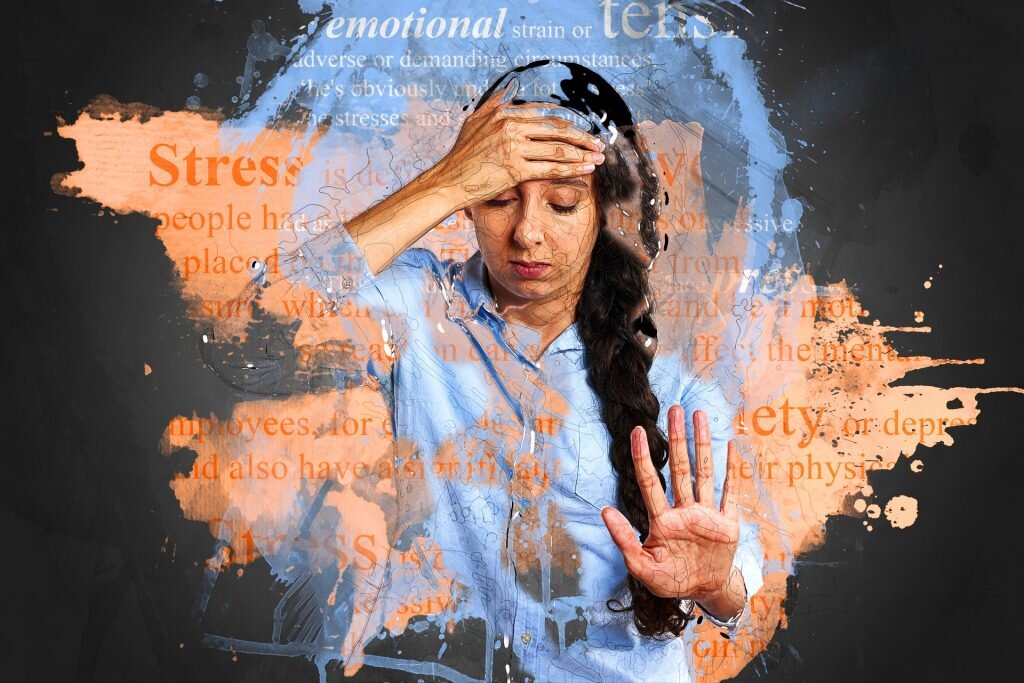Model How to Cope with Stress for Your Children
What are you teaching your children in difficult times?
Children remember what parents modeled during times of stress. These unspoken lessons often become the unconscious habits they resort to as adults when encountering unexpected emotional blows.
You might even notice in yourself that in times of great stress you revert to those annoying coping skills once used in front of you by your own parents. Multi-generational habits are hard to break, but it is possible.
To model the skills you would like to make available to your children in tough situations you must pay attention to your reactions and view them through the eyes of your child. What might seem a very reasonable response to you as an adult, viewing the larger picture, may seem very frightening or confusing to a child. Children react to anger with fearfulness but interpret humor and playfulness as safety.
Tips for Modeling Stress Management for Your Children
Say things you are grateful for daily out loud in front of your children.
Speak about the future with hopefulness.
Tell stories about times you or your family has overcome adversity.
Let your children know how lucky you feel to have them.
Compliment yourself in front of your children for accomplishing things that were
Teach and model your spiritual beliefs.
Teach your children the excitement of doing things that are not driven by commercialism, i.e. being in nature, participating in creativity, contributing to those less fortunate, and activities that foster closeness and playfulness such as games or looking through photo albums.
Spend time with positive friends so your children get to be with you rejuvenated after you have vented to adult peers.
Help kids see the opportunity in challenges. Model this.
Express genuine curiosity about their lives.
Laugh out loud with them every day.
Do physical activities with them like walking, basketball, tennis, swimming, etc.
Eat dinner together and talk about positive things (not what you want them to change).
Make bedtime a fun calm time where you share stories, feelings and events of the day.
It doesn’t cost much to make lasting memories
Free things to do with kids:
Draw chalk pictures of events in your child’s life on cement outdoors (let them help).
Watch planes take off at a small airport.
Go to a train station, count the the trains that stop.
Visit a local Nature Center (Oak Canyon, Anaheim Hills).
Take your teen to a music store; learn about “their music”.
Make cornstarch “goo” (box of cornstarch & cup of water).
Make up fantasy fairy tales (take turns telling the next sentence of the story).
Go through old photo albums together, share stories.
Feed ducks at a park.
Eat dinner outside on a blanket.
Read books together, use silly voices.
Make an ant farm.
Blow bubbles together.
A hundred years from now the memories you made with a child will still matter.
Dr. Nightingale’s Workbook for Mental Health During a Pandemic
During times of stress and unpredictability mental health and serenity can be jeopardized. Most people have never experienced the kind of life-style changes and unpredictability that this pandemic has wrought. Watching the unrest on news, seeing the death toll increase every day, missing celebrations, even funerals, and being isolated from friends and family is taking a high toll on peoples’ piece of mind. Dr. Nightingale’s Mental Health During a Pandemic Workbook provides simple straight forward activities to support people who wish to work on their mental health and serenity during this time of unrest and uncertainty. This workbook is written to provide structure and coping skills for readers to participate in exercises that can assist them in creating peace of mind during this pandemic.This book can be used individually, in groups or with a therapist. It is intended to help focus and guide readers to develop skills and make it easy to keep track of their progress in applying the skills.
Anxiety Can Get Better
40 million people suffer from some form of anxiety every year in the US. This includes Panic attacks, Obsessive Compulsive Disorder, Agoraphobia, Generalized Anxiety Disorder, Post-traumatic Stress Disorder and Phobias, including test-taking phobias, driving phobias and Separation Anxiety in children. In therapy, clients can learn relaxation skills to address the “fight or flight” reaction and coping strategies to overcoming anxiety.
Anxiety Books
The 10 Best-Ever Anxiety Management Techniques: Understanding How Your Brain Makes You Anxious and What You Can Do…by Wehrenberg
When Panic Attacks: The New, Drug-Free Anxiety Therapy That Can Change Your Life, by Burns
The Anxiety and Phobia Workbook, by Bourne
What to Do When You Worry Too Much: A Kid’s Guide to Overcoming Anxiety (What to Do Guides for Kids), by Huebner and Matthews
The Mindfulness and Acceptance Workbook for Anxiety: A Guide to Breaking Free from Anxiety, Phobias, and Worry… by. Forsythand, Eifert
The Anxiety Workbook for Teens: Activities to Help You Deal with Anxiety and Worry, by Schab
Freeing Your Child from Anxiety: Powerful, Practical Solutions to Overcome Your Child’s Fears, Worries, and Phobias… by Chansky
Feeling Good: The New Mood Therapy, by Burns
The 10 Best-Ever Anxiety Management Techniques: Understanding How Your Brain Makes You Anxious and What You Can Do..by Wehrenberg
When Panic Attacks: The New, Drug-Free Anxiety Therapy That Can Change Your Life, by Burns
The Anxiety and Phobia Workbook, by Bourne
What to Do When You Worry Too Much: A Kid’s Guide to Overcoming Anxiety (What to Do Guides for Kids), by Huebner and Matthews
The Mindfulness and Acceptance Workbook for Anxiety: A Guide to Breaking Free from Anxiety, Phobias, and Worry… by. Forsythand, Eifert
The Anxiety Workbook for Teens: Activities to Help You Deal with Anxiety and Worry, by Schab
Freeing Your Child from Anxiety: Powerful, Practical Solutions to Overcome Your Child’s Fears, Worries, and Phobias… by Chansky
Feeling Good: The New Mood Therapy, by Burns
Easy to use stress reduction strategies
Aps for your phone:
Meditation Timer & Tracker
Relax Melodies – Free
Anxiety Free – Free
Breathe2Relax – Free
Qi Gong Meditation Relaxation – Free
Nature Sounds Relanxiety3ax and Sleep-Free
Worry Box—Anxiety Self-Help-Free
Stop Panic & Anxiety Self-Help-Free
Relax & Rest Guided Meditations by Meditation Oasis
Universal Breathing by Saagara-Free
Easy Breathing Techniques:
1. Re-lax: Take 5-10 min. and breathe in slowly, saying silently to yourself “Re” and slowly exhale saying “Lax”.
2. Breathe in through your nose deeply (starting with your abdomen) to the count of 4. Hold your breath for 4 counts and then slowly exhale through your mouth for 4 counts. Repeat 10-20 times.
3. Place your tongue on the roof of your mouth (it stays there throughout this exercise). Breathe in through your nose for the count of 4. Hold for the count of 7. Exhale through your mouth around your tongue (it should make a noise) to the count of 8. Repeat 10 times.
Dr. Lois Nightingale, Psychologist, PSY9503 714-993-5343
Symptoms of Post-Traumatic Stress Disorder
(It is not necessary to have all symptoms to indicate PTSD)
After a serious trauma (in childhood or as an adult) hidden symptoms of Post-traumatic Stress can plague victims for years. Many sufferers can’t discuss these life-changing symptoms unless offered a safe environment in which to discuss them.
Re-experiencing the trauma, flashbacks as though it was happening all over again;
Increased anxiety and low frustration tolerance;
Intrusive disturbing thoughts of the trauma;
Nightmares or other sleep disturbances;
Emotional distress when reminded of the trauma;
Intense physical reactions to reminders of the event (e.g. pounding heart, rapid breathing, nausea, muscle tension, sweating)
Avoiding activities, or places that remind one of the trauma;
Inability to remember important aspects of the trauma;
Loss of interest in activities and life in general, feeling detached from others and emotionally numb;
Sense of a limited future, depression, hopelessness;
Irritability or outbursts of anger;
Difficulty concentrating, hyper-vigilance;
Feeling jumpy or easily startled;
Anger, irritability, guilt, shame, or self-blame, survivor guilt;
Substance abuse;
Feelings of mistrust and betrayal;
Suicidal thoughts;
Feeling alienated and alone;
Physical aches and pains.
Traumatic events that can lead to PTSD
Serious accident, war, childhood abuse/neglect, natural disaster, sudden death of a loved one, rape, assault, kidnapping, sexual abuse, terrifying emotional abuse, witnessing a violent incident, or any shattering event that leaves you feeling trapped, helpless and hopeless.
Things you can do for someone you care about with PTSD
Compliment their courage.
Be respectful of anniversaries of incidences, losses, etc.
Don’t take their anger personally. Anger is always a protective emotion for some underlying fear.
Listen respectfully to redundant stories. It’s one of the most precious gifts you can give.
Be kind. Don’t try to “educate” them about why they should feel differently or that their feelings are out of proportion to any current circumstances. Never say, “You should be over it”.
Remember, you may be oblivious to triggers that set off their flashbacks or painful memories. You did not survive the details of their trauma and the accompanying surrounding stimuli.
Never miss the opportunity to keep your mouth closed when you are tempted to judge.
Always create the opportunity to tell your loved one how lucky you feel to have them in your life.
Offer to participate in life-style changes, like healthy eating and exercise with them.
Books for you to read about PTSD
Shock Waves: A Practical Guide to Living with a Loved One’s PTSD, by Orange
When Someone You Love Suffers from Posttraumatic Stress: What to Expect and What You Can Do, by Zayfert, DeViva
The Post Traumatic Stress Disorder Relationship: How to Support Your Partner and Keep Your Relationship Healthy…by England
Supporting Children with Post Traumatic Stress Disorder: A Practical Guide for Teachers and Professionals, by Kinchin and Brown
When Someone You Love is Depressed: How to Help Your Loved One Without Losing Yourself, by Epstein Rosen and Francisco
How You Can Survive When They’re Depressed: Living and Coping with Depression Fallout, by Sheffield, Wallace, Klein
I Am Not Sick, I Don’t Need Help! How to Help Someone with Mental Illness Accept Treatment, by Amador
When Someone You Love Has a Mental Illness, by Woolis
Healing Together: A Couple’s Guide to Coping with Trauma and Post-traumatic Stress, by Phillips, Kane




